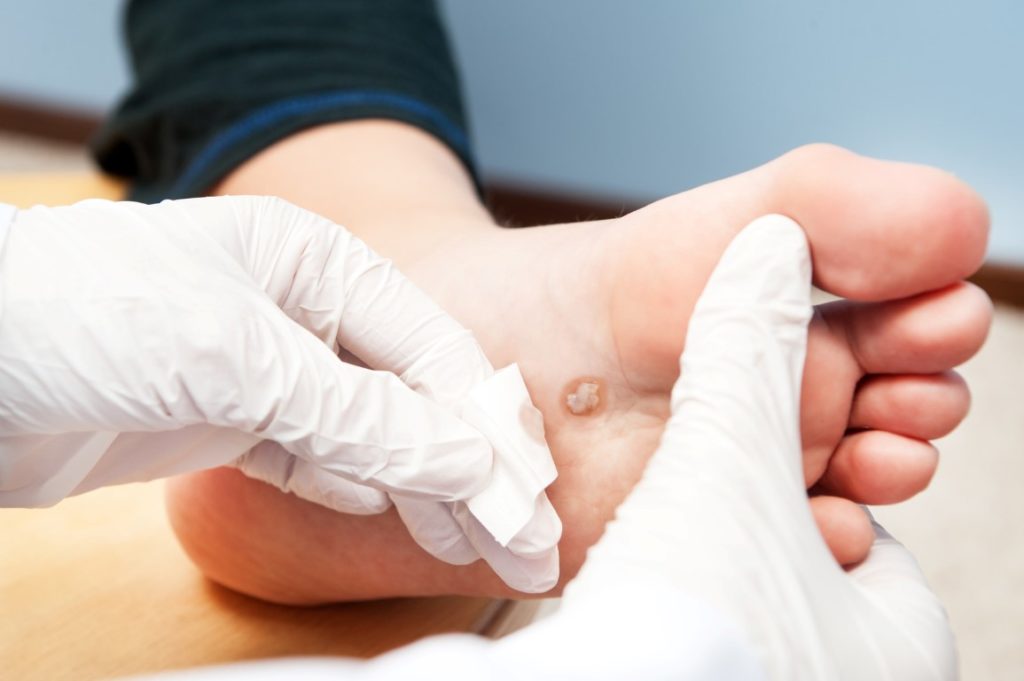A wart is a small, rough growth resembling a cauliflower or a solid blister. It typically occurs on humans’ hands or feet but often in other locations. Warts are caused by a viral infection, specifically by one of the many types of human papillomavirus (HPV).
There are over 100 types of HPV. Some HPV types infect the genital and oral mucosa and produce large, unpleasant masses, some of which may become cancerous. Other, HPV types are responsible for common skin warts and are not associated with cancer. Although warts are considered to be contagious, t is not uncommon for just one family member to have them. In addition, they often affect just one part of the body, but they can be spread to other areas by picking them.
A range of types of wart have been identified, varying in shape and site affected, as well as the type of human papillomavirus involved. These include:
- Common wart (Verruca vulgaris), a raised wart with roughened surface, most common on hands, but can grow anywhere on the body. Sometimes known as a Palmer wart or Junior wart.
- Flart wart (Verruca plana), a small, smooth flattened wart, flesh-coloured, which can occur in large numbers; most common on the face, neck, hands, wrists and knees.
- Filiform or digitate wart, a thread- or finger-like wart, most common on the face, especially near the eyelids and lips.
- Genital wart (venereal wart, Condyloma acuminatum, Verruca acuminata), a wart that occurs on the genitalia.
- Mosaic wart, a group of tightly clustered plantar-type warts, commonly on the hands or soles of the feet.
- Periungual wart, a cauliflower-like cluster of warts that occurs around the nails.
- Plantar wart (verruca, Verruca plantaris), a hard sometimes painful lump, often with multiple black specks in the center; usually only found on pressure points on the soles of the feet.
treatment
There are many treatments and procedures associated with wart removal. While at-home wart treatments can take weeks or months to work, salicylic acid plasters or solutions that peel away the wart can be very effective when used correctly.
- Salicylic acid can be prescribed by a dermatologist in a higher concentration than that found in over-the-counter products. Several OTC products are readily available at pharmacies and supermarkets of roughly two types: adhesive pads treated with salicylic acid, and bottled concentrated salicylic acid solution.
- Imiquimod is a topical cream that helps the body’s immune system fight the wart virus by encouraging interferon production. It has been approved by the U.S Food and Drug Administration (FDA) for genital warts.
- Freezing: You can freeze the wart with a really cold spray treatment you can buy at the store. The spray makes a blister around the wart. The blister and wart will eventually fall off. Don’t try to freeze your warts with ice cubes!
- Shot in the wart to stimulate the immune system.
- Lasers and other equipment to burn off the warts.
- Special surgery to take off the warts.




